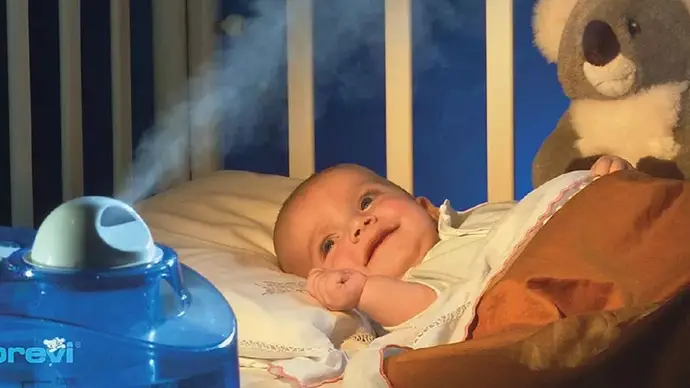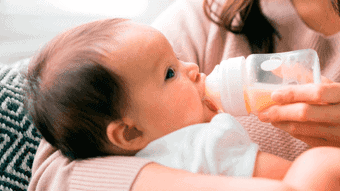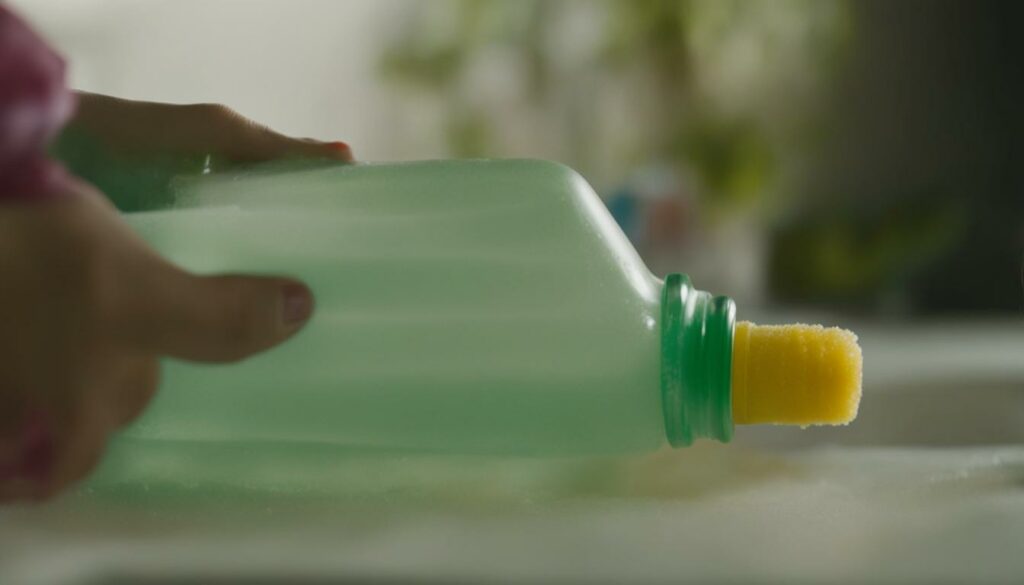As a new parent, you want to do everything possible to ensure your baby’s health and safety. Keeping your little one’s feeding items clean and germ-free is an important part of this. Among the various methods available, microwave sterilization has become a popular option for its convenience and time-saving nature. However, before you start zapping your baby bottles in the microwave, it’s essential to understand whether it’s a safe and suitable option.
Key Takeaways:
- Microwave sterilization is a popular method for its convenience and time-saving nature.
- Baby bottles need to be free of harmful bacteria, viruses, and other germs to ensure your baby’s health and safety.
- Proper guidelines and necessary precautions need to be followed while using the microwave for sterilizing baby bottles.
- The materials used in baby bottles and the techniques for microwave sterilization are important safety factors.
- By adhering to recommended practices, you can effectively and safely sterilize baby bottles using a microwave.

Different methods for sterilizing baby bottles
When it comes to feeding your baby, keeping their bottles clean and hygienic is crucial. There are several methods available for sterilizing baby bottles and other feeding items. Some of the options include:
- Electric steam sterilizers: These devices use steam to sterilize bottles and other feeding items. They are easy to use and can sterilize multiple bottles at once. However, they can be expensive and take up a lot of counter space.
- Steam sterilization: This method involves using a pot or microwave-safe bag to steam the bottles. It can be a cost-effective option, but it’s important to ensure the bottles are thoroughly dried to prevent contamination.
- Boiling water: Boiling bottles and other feeding items in water for 5-10 minutes can effectively sterilize them. However, this method can be time-consuming and may not be suitable for certain materials.
- Dishwasher: Running bottles and other feeding items through a dishwasher cycle can help sanitize them. However, this method may not be as effective as other sterilization methods and can damage certain materials.
- Bleach: Using a small amount of bleach and water solution can effectively disinfect baby bottles. However, it’s important to rinse the bottles thoroughly to ensure no bleach residue remains.
Each sterilization method has its pros and cons, and it’s important to choose a method that works best for you and your baby’s needs.
How does microwave sterilization work?
Microwave sterilization is a quick and easy method for sanitizing baby bottles. It works by using high-frequency electromagnetic waves to heat the water molecules inside the microwave sterilizer, creating steam that effectively kills bacteria and other germs on the baby bottles.
When using a microwave sterilizer, it’s essential to follow the manufacturer’s instructions carefully to ensure proper use and avoid any potential risks. Generally, you will need to fill the sterilizer with water and place the baby bottles inside, ensuring that they are facing downwards to allow steam to penetrate all parts of the bottle.
Once the microwave sterilizer is ready, place it in the microwave and set the appropriate power and duration settings, according to the user manual. When the sterilization is complete, carefully remove the sterilizer from the microwave and let it cool before opening and removing the sterilized baby bottles.
Steam sterilization versus microwave sterilization
While both methods rely on steam to sterilize baby bottles, steam sterilization uses an electric steam sterilizer to create the steam, whereas microwave sterilization uses the microwave to generate the steam. Electric steam sterilizers are generally larger and can sterilize multiple bottles at once. However, microwave sterilization is a quicker method and requires less equipment.
It’s essential to note that some baby bottles may not be suitable for microwave sterilization, such as those made of metal or with embedded metal parts. Always check the packaging or consult with the manufacturer to ensure that the baby bottles are microwave safe before attempting sterilization.
The safety of microwave sterilization for baby bottles
If you’re considering using a microwave sterilizer for your baby bottles, it’s essential to consider whether or not it is safe. While microwaving is a convenient and speedy method for sterilizing baby bottles, there are potential risks to be aware of.
First and foremost, it’s important to choose a microwave-safe baby bottle. Not all baby bottles are suitable for use in the microwave, and using the wrong type of bottle can lead to melting or even the release of harmful chemicals. Make sure to check the manufacturer’s instructions before microwaving any baby bottles.
Another potential risk is overheating. Overheating can cause hot spots in the liquid inside the bottle, which can burn your baby’s mouth. It’s important to avoid overheating by following the recommended power settings and duration for your particular microwave sterilizer.
Additionally, microwaving may not effectively eliminate all germs in the same way that other sterilization methods, such as steam sterilization, can. Some studies have suggested that microwaving may not be as thorough in fighting certain bacteria and viruses.
While there are some potential risks associated with microwave sterilization, with proper precautions and attention to guidelines, it can be a safe method for sterilizing your baby bottles. Always check your baby bottles for microwave safety, avoid overheating, and consider using alternative sterilization methods if you have any doubts about the effectiveness of microwave sterilization for your specific situation.
Best practices for microwave sterilization
Microwave sterilizers are a quick and convenient way to sterilize baby bottles and other feeding items. However, it is essential to follow proper guidelines to ensure you are using this method safely and effectively.
Choose a suitable microwave sterilizer
When selecting a microwave sterilizer, ensure it is designed for baby bottles and follow the manufacturer’s instructions for usage. Look for one with a lid that can be securely fastened for optimal steam circulation and to avoid leaks and spills.
Timing and power settings
It is essential to follow the appropriate time and power settings recommended by the manufacturer. Overheating can cause damage to the bottles, and underheating can leave harmful bacteria behind. Consider the wattage of your microwave when selecting the appropriate time and power settings. As a general rule, sterilization typically takes between 5 and 8 minutes in a 1,000 watt microwave.
Precautions
Always use caution when removing the sterilizer from the microwave as it will be hot. Allow it to cool down before handling. Use tongs or oven mitts to remove hot items. Be sure to clean the sterilizer and microwave regularly to prevent the buildup of bacteria.
Alternative methods for sanitizing baby bottles
If microwave sterilization is not suitable for you, there are alternative methods of sterilizing baby bottles. These include electric steam sterilizers, steam sterilization, boiling water, and using bleach for disinfecting baby bottles. Each method has its advantages and disadvantages, so choose the one that works best for you and your family.
Ultimately, following best practices and safety guidelines, microwave sterilization can be an effective way to ensure your baby’s feeding items remain clean and germ-free. As with any sterilization method, be sure to check regularly for signs of wear and damage in the bottles and replace them as necessary to maintain optimal hygiene standards.
Conclusion
Microwave sterilization can be a safe and effective method for keeping your baby bottles clean and germ-free. However, it is crucial to follow proper guidelines and take necessary precautions to ensure that you are using a microwave sterilizer safely.
Always check that your baby bottles are microwave-safe and made of materials that can withstand high temperatures. Use a recommended sterilization duration and power setting, and be mindful of any warning signs like overheating or melting of the bottle.
If you prefer an alternative method for sanitizing baby bottles, electric steam sterilizers, steam sterilization, boiling water, dishwasher, and using bleach are all viable options.
Overall, the key takeaway is that safe microwave sterilization should not be overlooked as an option for keeping your baby’s feeding items clean and healthy.




